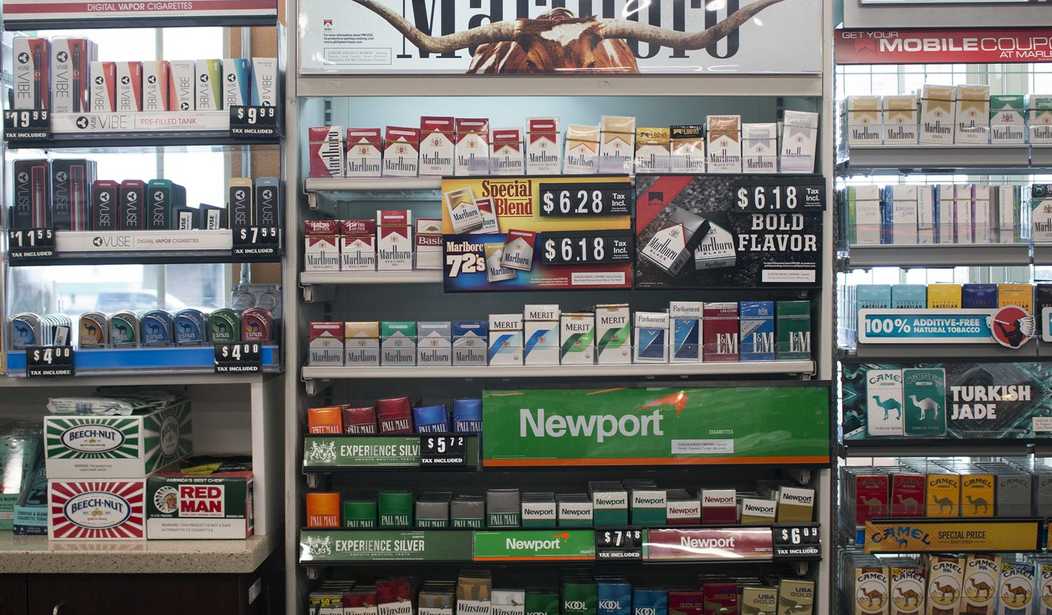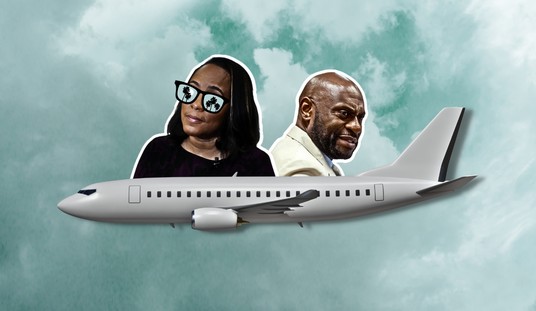Editor's Note: This column was co-authored by Chris Talgo
On December 6, 2019, the U.S. House of Representatives passed a $1.4 trillion spending bill to fund the federal government’s discretionary programs for the fiscal year 2020. Colossal spending bills, like the one passed earlier this week, are akin to political Christmas trees because they include a whole bunch of “presents” for legislators. President Trump is expected to sign the legislation on December 20.
Typically, these “gifts” include pork-barrel projects that congress members shove into the legislation to “bring home the bacon,” aka please their constituents. We all know so-called omnibus spending bills are rife with all sorts of unnecessary goodies to entice bipartisan support.
However, the most recent spending bill includes one giant lump of coal that will be delivered to all Americans under the age of 21: A provision that would raise the age to purchase tobacco to 21.
You may be wondering why this is a big deal. Shouldn’t we institute measures to decrease tobacco consumption? To that, I respond with a crystal-clear “no.” Why? Because enacting national age minimums not only does not work, but they undermine federalism and the notions of freedom and individual liberty that make America great.
Further, such federal action will lead to even more erosion of personal liberty, especially when raising the tobacco and e-cigarette purchasing age turns out to have little impact on youth use. For example, the Aloha State was the first in the nation to raise the purchasing age of tobacco products to 21, which went into effect on January 1, 2016. According to Hawai’i Youth Tobacco Surveys, from 2015 to 2017, e-cigarette use among middle schoolers and high school increased by 77 and 79 percent, respectively. Overall tobacco use increased by over 53 percent for middle schoolers during the same time period.
Recommended
Not to be outdone, California raised the state’s tobacco purchasing age as well—the second state to do so—which went into effect on June 9, 2016. Though high school tobacco use decreased from 2016 to 2018, these decreases are minuscule (3 and 7 percent for 10th and 12th graders, respectively). This is far less than in previous years, when smoking prevalence among 10th and 12th graders decreased by 32 and 27 percent, respectively, from 2010 to 2012.
To better underscore the ineffectiveness of age requirements, one simply can look at youth use of alcohol, which has been age-restricted since 1986, when states were forced by the federal government to increase the age to 21 lest they lose their much-coveted federal highway funding. According to the 2019 Monitoring the Future Survey, 29.3 percent of 12th graders, 18.4 percent of 10th graders, and 7.9 percent of 8th graders reported imbibing alcohol in the past month. Further, 14.4 percent of high school seniors reported binge drinking. In other words, age minimums do not work.
As lawmakers proceed to use tobacco 21 as a way to stymie a so-called youth vaping epidemic, one has to wonder why are we doing this now? Youth smoking-rates, even when including vaping, is at an all-time low. In 1997, when youth smoking rates peaked, 34.6 percent of high school students reported past smoking within the past month. Even more alarming, 42.7 percent, or nearly half, of high school students reported using any tobacco product. In 2018, only 27.1 percent of high school students reported past 30-day tobacco product use, with 20.8 percent reporting using electronic cigarettes in the past 30 days.
Why didn’t states push the age of tobacco purchases to 21 when over one-third of youth were smoking combustible cigarettes? Because in 1997, an additional 23 states joined 14 others in suing the major tobacco manufacturers for the costs of smoking-related health ailments.
In 1998, a total of 46 states would reach an agreement with the major tobacco companies in what would be known at the Master Settlement Agreement. Under this, the suing states are the recipients of annual payments in perpetuity. Despite suing tobacco manufacturers for health care costs, states have increasingly relied on these payments for programs other than health care, and spend an abysmal 2 percent on tobacco prevention and education programs.
Like most things in life, just follow the money. And the trail of tobacco money leads one right to the Master Settlement Agreement, and the billions at stake for mostly-bankrupt states.
Lindsey Stroud (lstroud@heartland.org) is a state government relations manager at The Heartland Institute. Chris Talgo(ctalgo@heartland.org) is an editor at The Heartland Institute.

























Join the conversation as a VIP Member